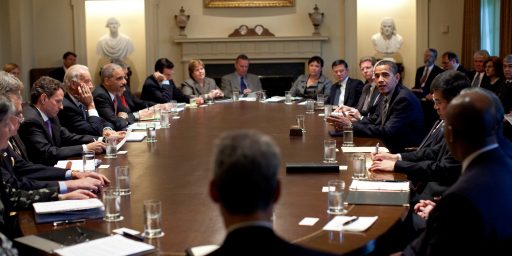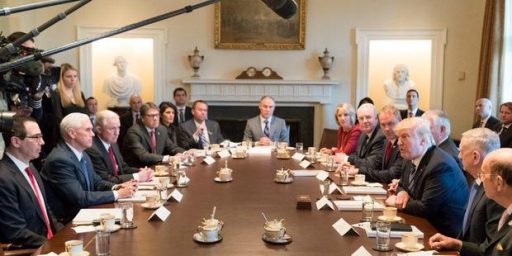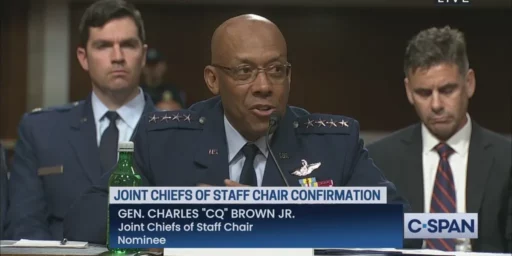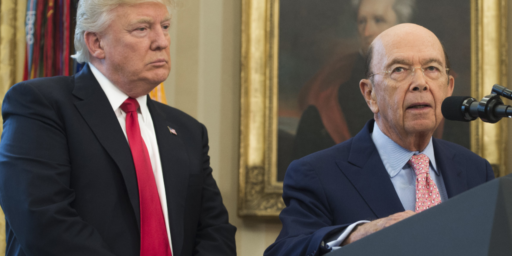The Decline of Cabinet Government
David Greenberg has an interesting historical essay entitled, “The Sorry Lot of a Bush Cabinet Secretary.” The essence of the piece:
The deterioration of the Cabinet as a consultative body actually began the day George Washington gave his farewell address. When Washington was president, the Cabinet was an important decision-making entity. Then again, Washington had a small Cabinet: Thomas Jefferson at State, Alexander Hamilton at Treasury, and Henry Knox at the War Department, along with Attorney General Edmund Randolph (and some sources consider the postmaster general back then to have been part of the Cabinet as well). Because the president lacked other advisers, he naturally turned to these sages for guidance on major decisions, such as whether to accept a national bank and where to locate the federal capital.
But the Cabinet’s life as a true advisory body was short. Andrew Jackson used his Cabinet to reward political patrons, whom he proceeded to ignore. Instead he depended on what was called, in a term later promulgated widely, his “Kitchen Cabinet.” Thereafter, the Cabinet’s power ebbed and flowed depending on the president’s inclinations but rarely served as a key vehicle for policymaking. Abraham Lincoln, according to Shirley Anne Warshaw, author of Powersharing: White House-Cabinet Relations in the Modern Presidency, “sought to use the cabinet as a forum for policy discussions in a manner similar to the Washington presidency.” But even his Cabinet was known for the limits of its influence: According to a famous story, he polled his Cabinet in September 1862 on whether to issue the Emancipation Proclamation. Everyone said no; Lincoln did it anyway.
Franklin Roosevelt probably buried the Cabinet for good with his creation of the Executive Office of the President. That institution, which included both the White House Office and the Bureau of the Budget, became the seat of presidential policymaking. Since FDR’s administration, the presidential staff has expanded relentlessly in both personnel and budget. The creation of offices such as the Council of Economic Advisers in 1946, the National Security Council in 1947, the Office of the U.S. Trade Representative in 1963, and numerous other offices provided institutional homes within the White House for more and more decisions that Cabinet departments used to handle.
To be sure, the Cabinet’s own expansion kept pace. In the postwar years, departments multiplied, with the creation of the Departments of Health, Education, and Welfare (1953), Housing and Urban Development (1966), Transportation (1966), Energy (1977), Education (1979), and Veterans’ Affairs (1989). In practice, though, the proliferation of new divisions dispersed and diluted the Cabinet’s authority since new White House bodies—a National Economic Council, a Domestic Policy Council, and so on—emerged to mediate among the various officials with a stake in a given issue.
Moreover, the departments spawned a slew of agencies and bureaus whose daily administration alone required a veritable CEO. Cabinet secretaries became bureaucratic managers whose work could easily consume their waking hours even if they never saw the president except at the annual White House Christmas party. The Cabinet has become the rare institution, Lyndon Johnson’s aide George Reedy said, “in which the whole is less than the sum of its parts.”
Indeed. None of this is to say that individual cabinet secretaries can’t be quite powerful. Don Rumsfeld surely has a substantial impact on shaping defense policy. But their influence comes from their ability to persuade the president and manage their bureaucracies effectively, not from the assembled meetings of the whole cabinet.





